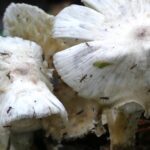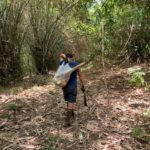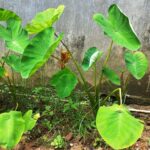Cowpeas (Vigna lobatifolia) are strong climbers that resemble Mung beans. The stem of this vine is up to 6 m long and develops trifoliate leaves. Its flowers resemble purplish pea-flowers, and the pods are about. 7 – 9 cm (2 ¾ – 3 ½‘’) long, thin, linear, and slightly recurved and twisted. The flowering time is in summer after the first good rains. Most important for human consumption are its tubers, called ‘Bush potatoes’ by Namibian locals. Distribution of this Vigna subspecies is restricted to Southern Africa. For details, see this Link. Hadza people in Tanzania also utilize tubers of a Vigna species (Vigna frutescens) as a regular food supply.
Cowpea tubers (bush potatoes) are regarded as one of the most important food plants for Khoi-san people in their habitation zones within Southern Africa. Especially in wintertime, bush potatoes are, besides Manketti nuts, the most sought-after wild food items.

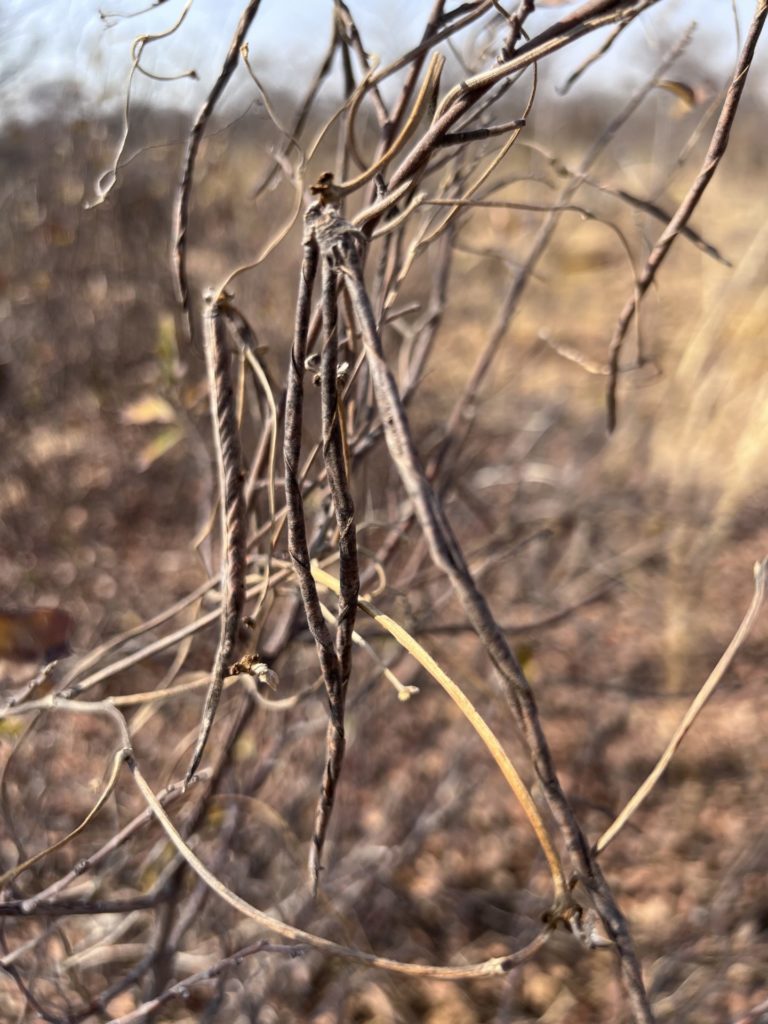
How do you find bush potatoes?
Generally, finding Cowpea plants is difficult. They grow mainly in sandy bushveld biomes among various similar-looking plants, shrubs, and bushes.
In the summertime, its trifoliate leaves can be spotted but can also be easily confused with others in the area. But Khoi-san women, who do mainly wild food plant foraging, developed a good eye for such differences. On the other hand, Khoi-sanmen are going purposefully after the meat. They only collect useful plants when coincidentally finding them during hunting.
It is far more difficult to find bush potatoes in wintertime when shrubs and vines are void of leaves, and only the dried pods of Cowpeas are visible. These pods, however, are very inconspicuous among the shrub branches, as they have the same color as all the stems around. Furthermore, they are slightly curved and have the same diameter as the twigs. I would say they are, therefore, perfectly camouflaged. Only the twist in the pods can be seen. And for these twists and a bundle of two or three of such pods from one node, the collectors are looking out. The foragers retrace the vine to where it emerges from the soil. This point is usually close to a bush, and the vine itself is nearly impossible to distinguish from the bush stems.
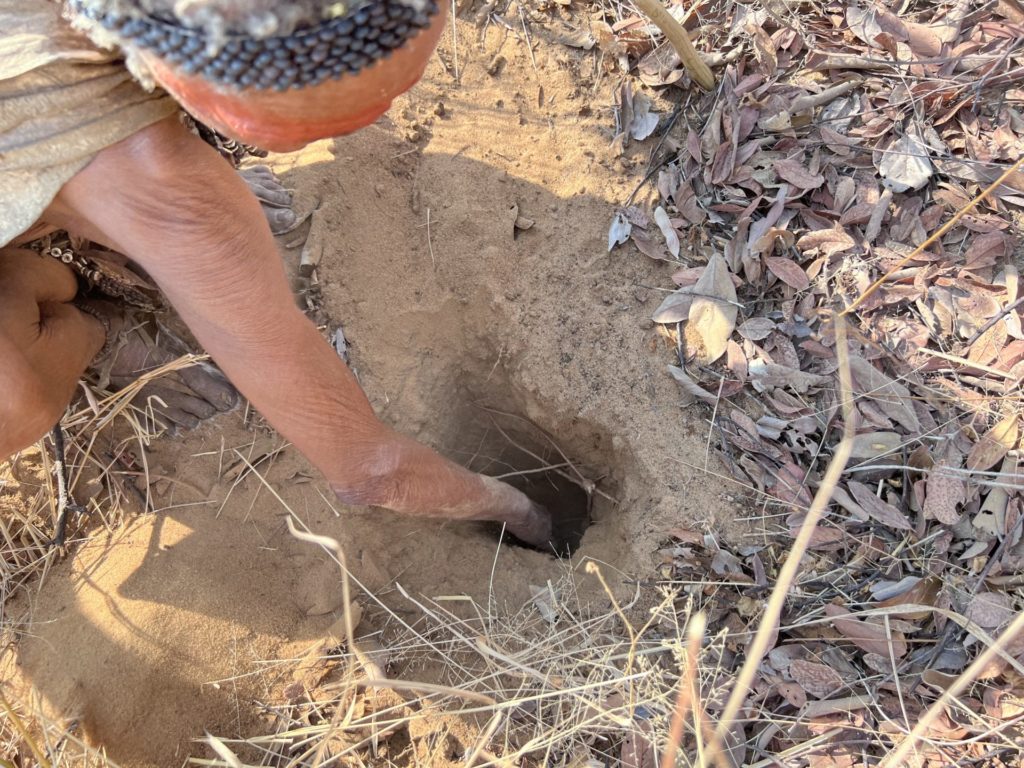
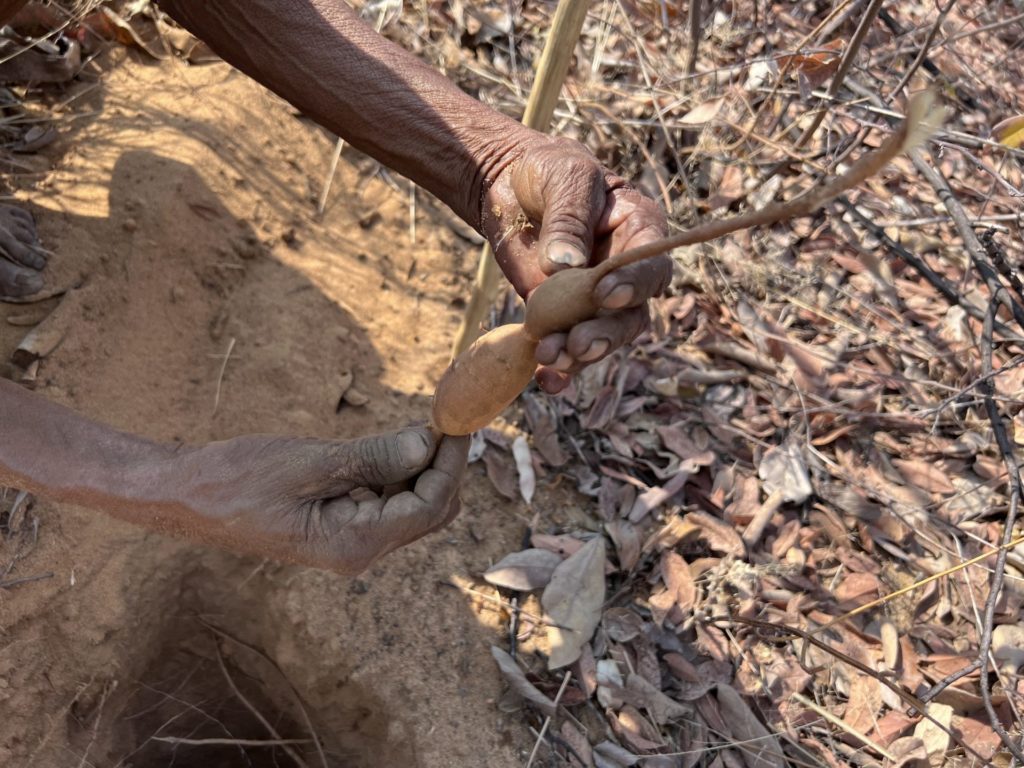
Digging for bush potatoes
By vertically digging down along the vine stem, tubers will be found at a depth of about 25 cm (10’’) and deeper. Then, the sand will be loosened with a digging stick and scooped out by hand. If there are roots from the horizontal roots of the neighboring bush, these have to be broken and removed from the hole. The tubers are light brownish and look similar to raw potato skins. These tubers are variable in size but always about 3 cm (1 1/2’’) in diameter with different lengths and connected by one threat-like root. How deep these tubers are rooting is not known to me, but due to practical restrictions, the hole can’t be dug deeper than about 60 cm (abt. 2 ft).
It is also a good experience to feel how temperature and humidity change within these holes by hand. At the surface, the temperature of the sand depends on ambient temperatures, which was 38 degrees C (about. 100 degrees F), so the first centimeters of sand were searing hot. By digging down the sand just about 15 cm (6’’) deep, the sand was getting considerably cooler and felt humid. At a depth of about. 30 cm (about. 1 ft), it was relatively cool in the hole, and the sidewalls felt wet. This was also why digging a straight, vertical hole that did not cave in was possible. It also reminded me of the narrative that Khoi-san people dug people into the sand who were heavily dehydrated. This practice makes absolute sense to me now.
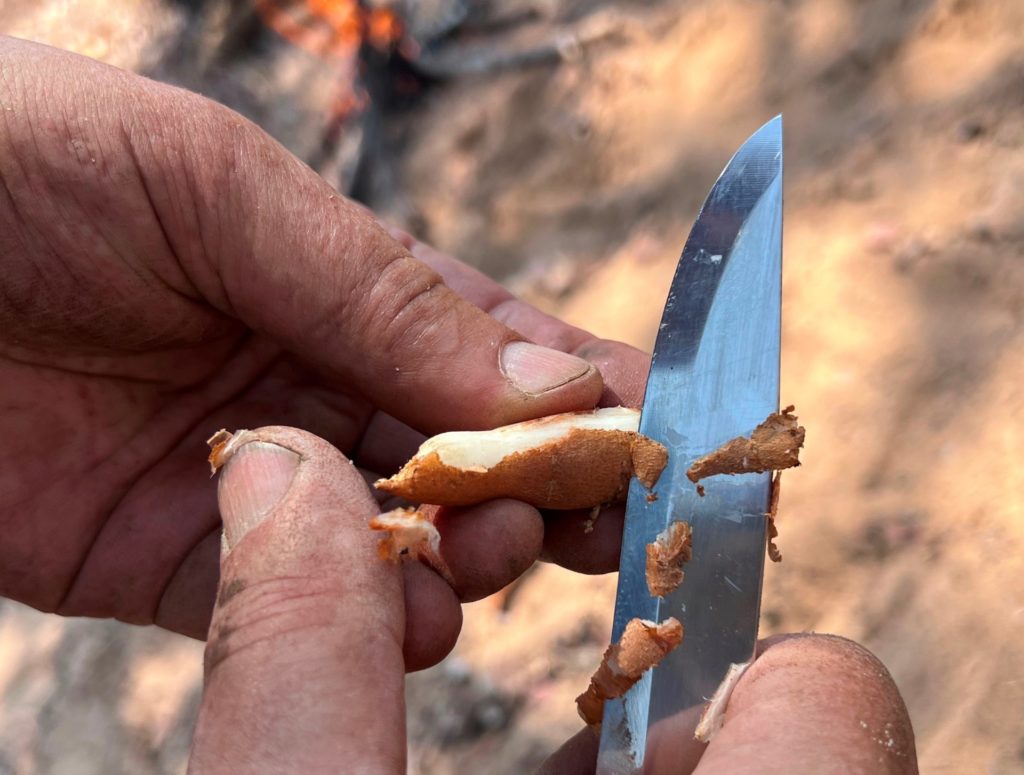
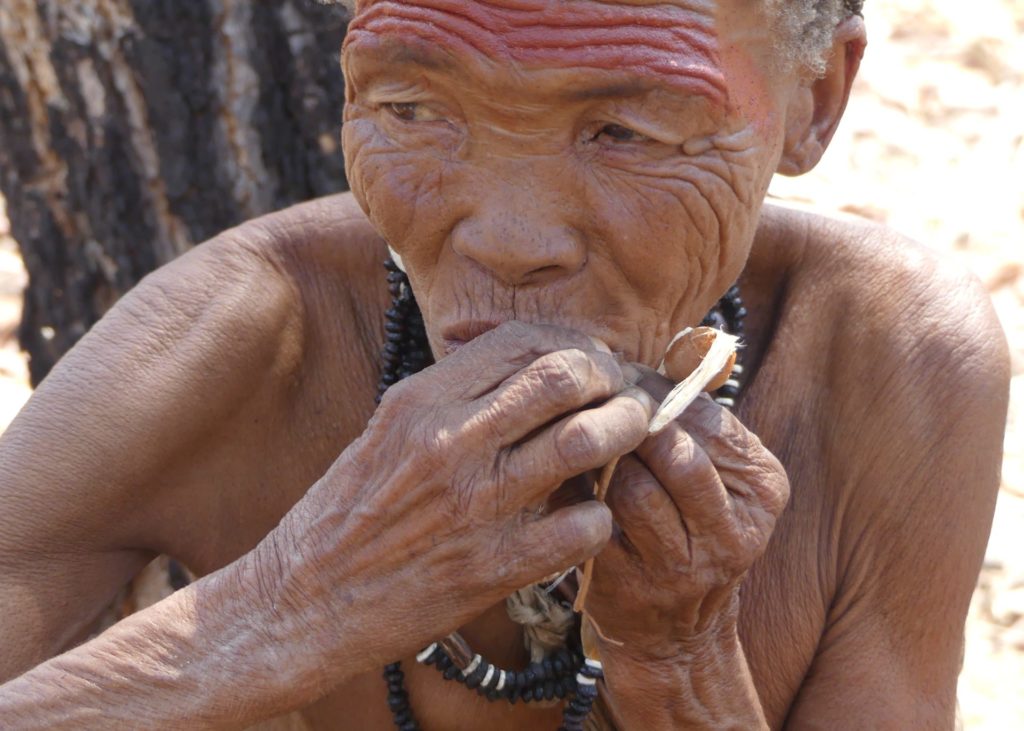
Eating bush potatoes
There is a thin peel over the tubers, and below that peel is a white, fiber-less interior material, which is eaten either raw or roasted. For eating raw, the peel is cut away, and the inside material tastes like very mild radish with quite a high water content.
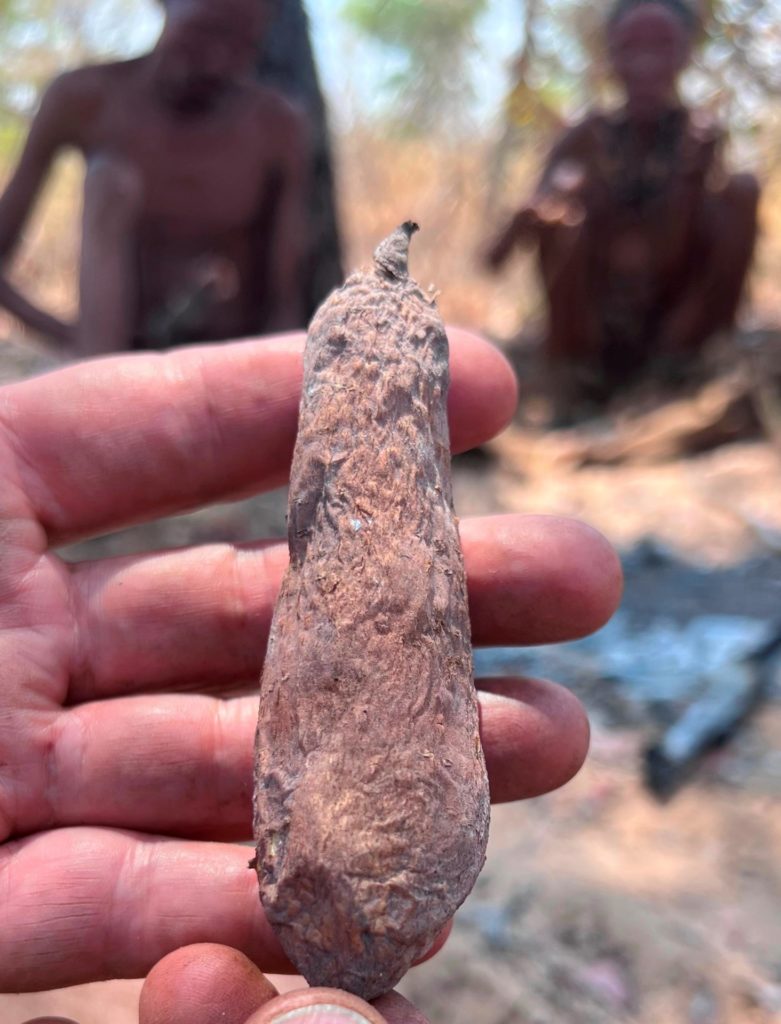
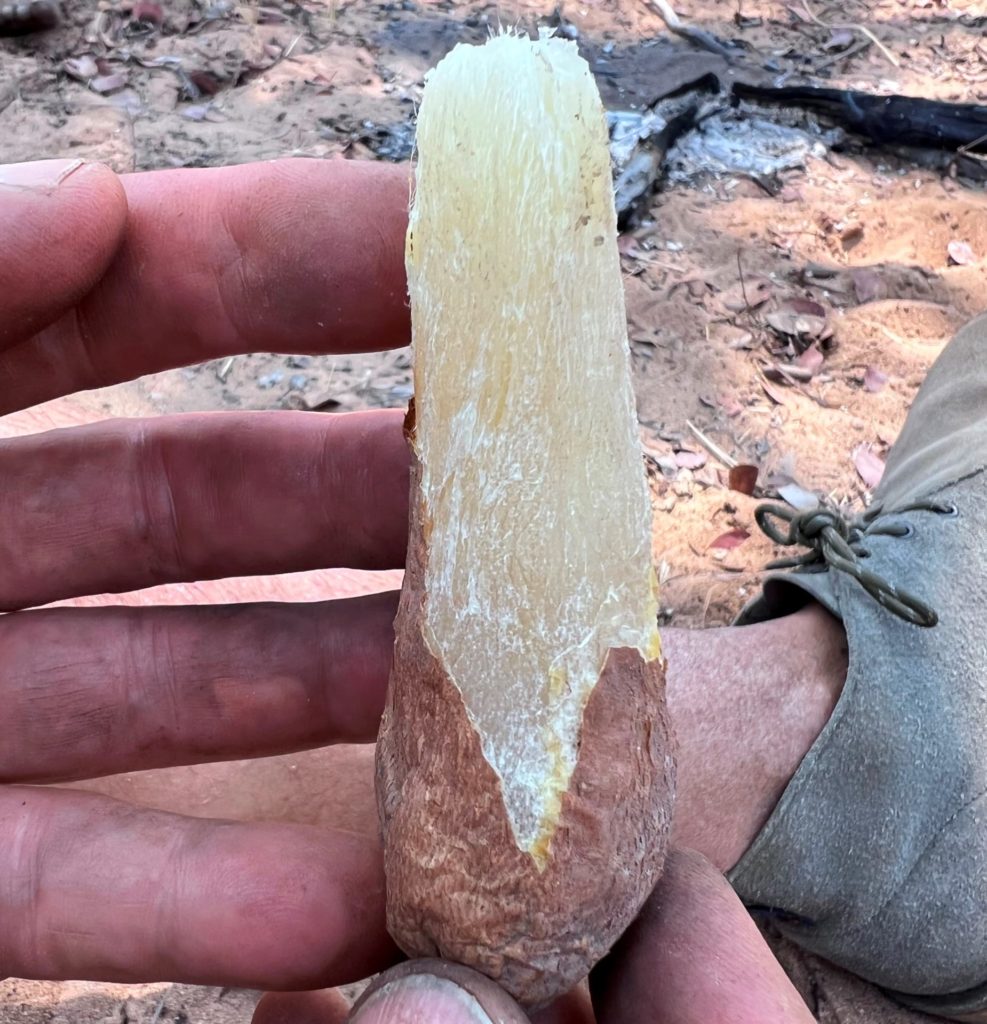
For roasting, the tubers are shallowly buried in hot sand next to a fire and thinly covered by hot sand. When the water inside the tuber evaporates, the peel starts popping here and there. After about 10 minutes of roasting in sand, the tubers are done. They can be peeled and eaten and taste like roasted potatoes.
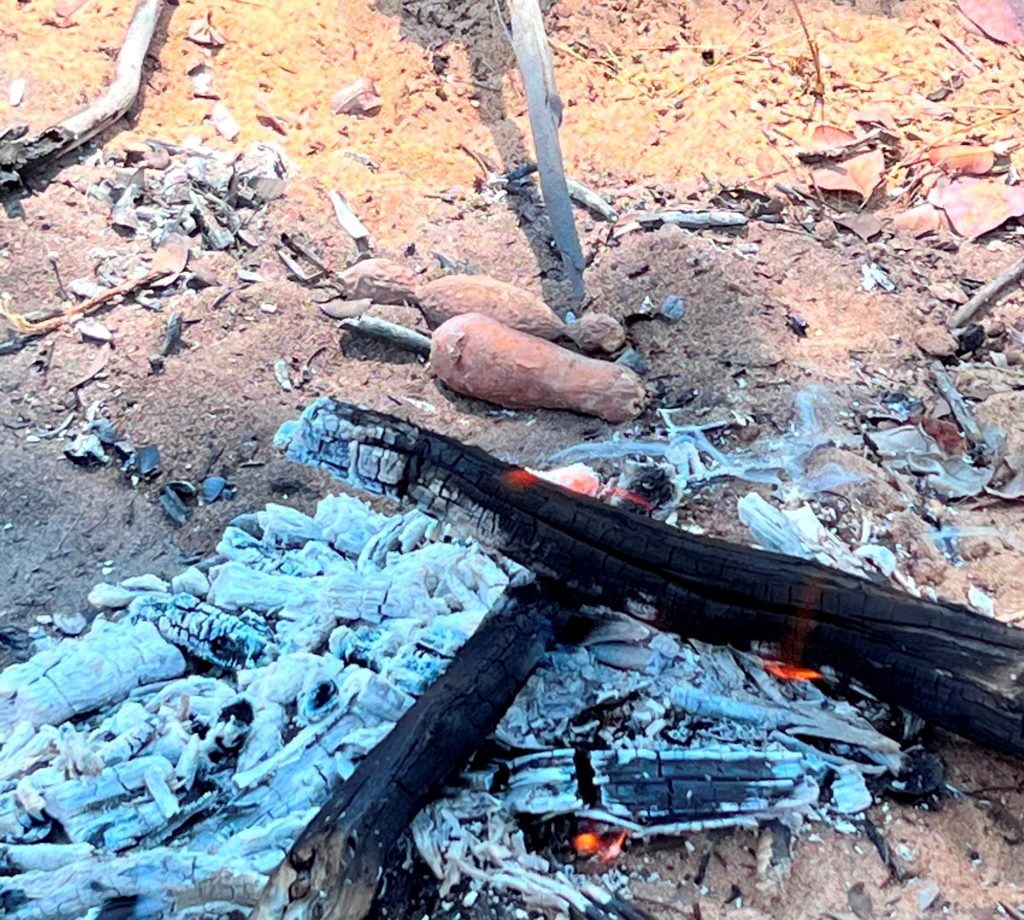
According to the literature, the protein content of these tubers is about. 15%, which is high, compared to up to 7% for potatoes and yams, and is 8-fold higher than for sweet potatoes and tapioca.
Lessons learned about Cow pea tubers
- Cowpeas can be found around the globe in tropical and subtropical countries.
- They have got very inconspicuous leaves and pods to find them
- Most importantly, they have edible tubers, which can be eaten raw or cooked
- The taste of raw tubers is like radish and of cooked ones like potato
.


